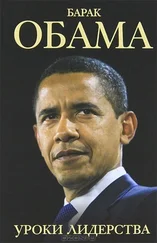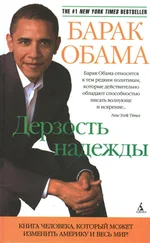Барак Обама - The Audacity of Hope
Здесь есть возможность читать онлайн «Барак Обама - The Audacity of Hope» весь текст электронной книги совершенно бесплатно (целиком полную версию без сокращений). В некоторых случаях можно слушать аудио, скачать через торрент в формате fb2 и присутствует краткое содержание. Жанр: Политика, на английском языке. Описание произведения, (предисловие) а так же отзывы посетителей доступны на портале библиотеки ЛибКат.
- Название:The Audacity of Hope
- Автор:
- Жанр:
- Год:неизвестен
- ISBN:нет данных
- Рейтинг книги:5 / 5. Голосов: 1
-
Избранное:Добавить в избранное
- Отзывы:
-
Ваша оценка:
- 100
- 1
- 2
- 3
- 4
- 5
The Audacity of Hope: краткое содержание, описание и аннотация
Предлагаем к чтению аннотацию, описание, краткое содержание или предисловие (зависит от того, что написал сам автор книги «The Audacity of Hope»). Если вы не нашли необходимую информацию о книге — напишите в комментариях, мы постараемся отыскать её.
The Audacity of Hope — читать онлайн бесплатно полную книгу (весь текст) целиком
Ниже представлен текст книги, разбитый по страницам. Система сохранения места последней прочитанной страницы, позволяет с удобством читать онлайн бесплатно книгу «The Audacity of Hope», без необходимости каждый раз заново искать на чём Вы остановились. Поставьте закладку, и сможете в любой момент перейти на страницу, на которой закончили чтение.
Интервал:
Закладка:
That Reagan’s message found such a receptive audience spoke not only to his skills as a communicator; it also spoke to the failures of liberal government, during a period of economic stagnation, to give middle-class voters any sense that it was fighting for them. For the fact was that government at every level had become too cavalier about spending taxpayer money. Too often, bureaucracies were oblivious to the cost of their mandates. A lot of liberal rhetoric did seem to value rights and entitlements over duties and responsibilities. Reagan may have exaggerated the sins of the welfare state, and certainly liberals were right to complain that his domestic policies tilted heavily toward economic elites, with corporate raiders making tidy profits throughout the eighties while unions were busted and the income for the average working stiff flatlined.
Nevertheless, by promising to side with those who worked hard, obeyed the law, cared for their families, and loved their country, Reagan offered Americans a sense of a common purpose that liberals seemed no longer able to muster. And the more his critics carped, the more those critics played into the role he’d written for them — a band of out-of-touch, tax-and-spend, blame-America-first, politically correct elites.
WHAT I FIND remarkable is not that the political formula developed by Reagan worked at the time, but just how durable the narrative that he helped promote has proven to be. Despite a forty-year remove, the tumult of the sixties and the subsequent backlash continues to drive our political discourse. Partly it underscores how deeply felt the conflicts of the sixties must have been for the men and women who came of age at that time, and the degree to which the arguments of the era were understood not simply as political disputes but as individual choices that defined personal identity and moral standing.
I suppose it also highlights the fact that the flash-point issues of the sixties were never fully resolved. The fury of the counterculture may have dissipated into consumerism, lifestyle choices, and musical preferences rather than political commitments, but the problems of race, war, poverty, and relations between the sexes did not go away.
And maybe it just has to do with the sheer size of the Baby Boom generation, a demographic force that exerts the same gravitational pull in politics that it exerts on everything else, from the market for Viagra to the number of cup holders automakers put in their cars.
Whatever the explanation, after Reagan the lines between Republican and Democrat, liberal and conservative, would be drawn in more sharply ideological terms. This was true, of course, for the hot-button issues of affirmative action, crime, welfare, abortion, and school prayer, all of which were extensions of earlier battles. But it was also now true for every other issue, large or small, domestic or foreign, all of which were reduced to a menu of either-or, for-or-against, sound-bite-ready choices. No longer was economic policy a matter of weighing trade-offs between competing goals of productivity and distributional justice, of growing the pie and slicing the pie. You were for either tax cuts or tax hikes, small government or big government. No longer was environmental policy a matter of balancing sound stewardship of our natural resources with the demands of a modern economy; you either supported unchecked development, drilling, strip-mining, and the like, or you supported stifling bureaucracy and red tape that choked off growth. In politics, if not in policy, simplicity was a virtue.
Sometimes I suspect that even the Republican leaders who immediately followed Reagan weren’t entirely comfortable with the direction politics had taken. In the mouths of men like George H. W. Bush and Bob Dole, the polarizing rhetoric and the politics of resentment always seemed forced, a way of peeling off voters from the Democratic base and not necessarily a recipe for governing.
But for a younger generation of conservative operatives who would soon rise to power, for Newt Gingrich and Karl Rove and Grover Norquist and Ralph Reed, the fiery rhetoric was more than a matter of campaign strategy. They were true believers who meant what they said, whether it was “No new taxes” or “We are a Christian nation.” In fact, with their rigid doctrines, slash-and-burn style, and exaggerated sense of having been aggrieved, this new conservative leadership was eerily reminiscent of some of the New Left’s leaders during the sixties. As with their left-wing counterparts, this new vanguard of the right viewed politics as a contest not just between competing policy visions, but between good and evil. Activists in both parties began developing litmus tests, checklists of orthodoxy, leaving a Democrat who questioned abortion increasingly lonely, any Republican who championed gun control effectively marooned. In this Manichean struggle, compromise came to look like weakness, to be punished or purged. You were with us or against us. You had to choose sides.
It was Bill Clinton’s singular contribution that he tried to transcend this ideological deadlock, recognizing not only that what had come to be meant by the labels of “conservative” and “liberal” played to Republican advantage, but that the categories were inadequate to address the problems we faced. At times during his first campaign, his gestures toward disaffected Reagan Democrats could seem clumsy and transparent (what ever happened to Sister Souljah?) or frighteningly coldhearted (allowing the execution of a mentally retarded death row inmate to go forward on the eve of an important primary). In the first two years of his presidency, he would be forced to abandon some core elements of his platform — universal health care, aggressive investment in education and training — that might have more decisively reversed the long-term trends that were undermining the position of working families in the new economy.
Still, he instinctively understood the falseness of the choices being presented to the American people. He saw that government spending and regulation could, if properly designed, serve as vital ingredients and not inhibitors to economic growth, and how markets and fiscal discipline could help promote social justice. He recognized that not only societal responsibility but personal responsibility was needed to combat poverty. In his platform — if not always in his day-to-day politics — Clinton’s Third Way went beyond splitting the difference. It tapped into the pragmatic, nonideological attitude of the majority of Americans.
Indeed, by the end of his presidency, Clinton’s policies — recognizably progressive if modest in their goals — enjoyed broad public support. Politically, he had wrung out of the Democratic Party some of the excesses that had kept it from winning elections. That he failed, despite a booming economy, to translate popular policies into anything resembling a governing coalition said something about the demographic difficulties Democrats were facing (in particular, the shift in population growth to an increasingly solid Republican South) and the structural advantages the Republicans enjoyed in the Senate, where the votes of two Republican senators from Wyoming, population 493,782, equaled the votes of two Democratic senators from California, population 33,871,648.
But that failure also testified to the skill with which Gingrich, Rove, Norquist, and the like were able to consolidate and institutionalize the conservative movement. They tapped the unlimited resources of corporate sponsors and wealthy donors to create a network of think tanks and media outlets. They brought state-of-the-art technology to the task of mobilizing their base, and centralized power in the House of Representatives in order to enhance party discipline.
And they understood the threat Clinton posed to their vision of a long-term conservative majority, which helps explain the vehemence with which they went after him. It also explains why they invested so much time attacking Clinton’s morality, for if Clinton’s policies were hardly radical, his biography (the draft letter saga, the marijuana puffing, the Ivy League intellectualism, the professional wife who didn’t bake cookies, and most of all the sex) proved perfect grist for the conservative base. With enough repetition, a looseness with the facts, and the ultimately undeniable evidence of the President’s own personal lapses, Clinton could be made to embody the very traits of sixties liberalism that had helped spur the conservative movement in the first place. Clinton may have fought that movement to a draw, but the movement would come out stronger for it — and in George W. Bush’s first term, that movement would take over the United States government.
Читать дальшеИнтервал:
Закладка:
Похожие книги на «The Audacity of Hope»
Представляем Вашему вниманию похожие книги на «The Audacity of Hope» списком для выбора. Мы отобрали схожую по названию и смыслу литературу в надежде предоставить читателям больше вариантов отыскать новые, интересные, ещё непрочитанные произведения.
Обсуждение, отзывы о книге «The Audacity of Hope» и просто собственные мнения читателей. Оставьте ваши комментарии, напишите, что Вы думаете о произведении, его смысле или главных героях. Укажите что конкретно понравилось, а что нет, и почему Вы так считаете.

![Барак Обама - Дерзость надежды. Мысли об возрождении американской мечты [The Audacity of Hope]](/books/26630/barak-obama-derzost-nadezhdy-mysli-ob-vozrozhdenii-thumb.webp)










